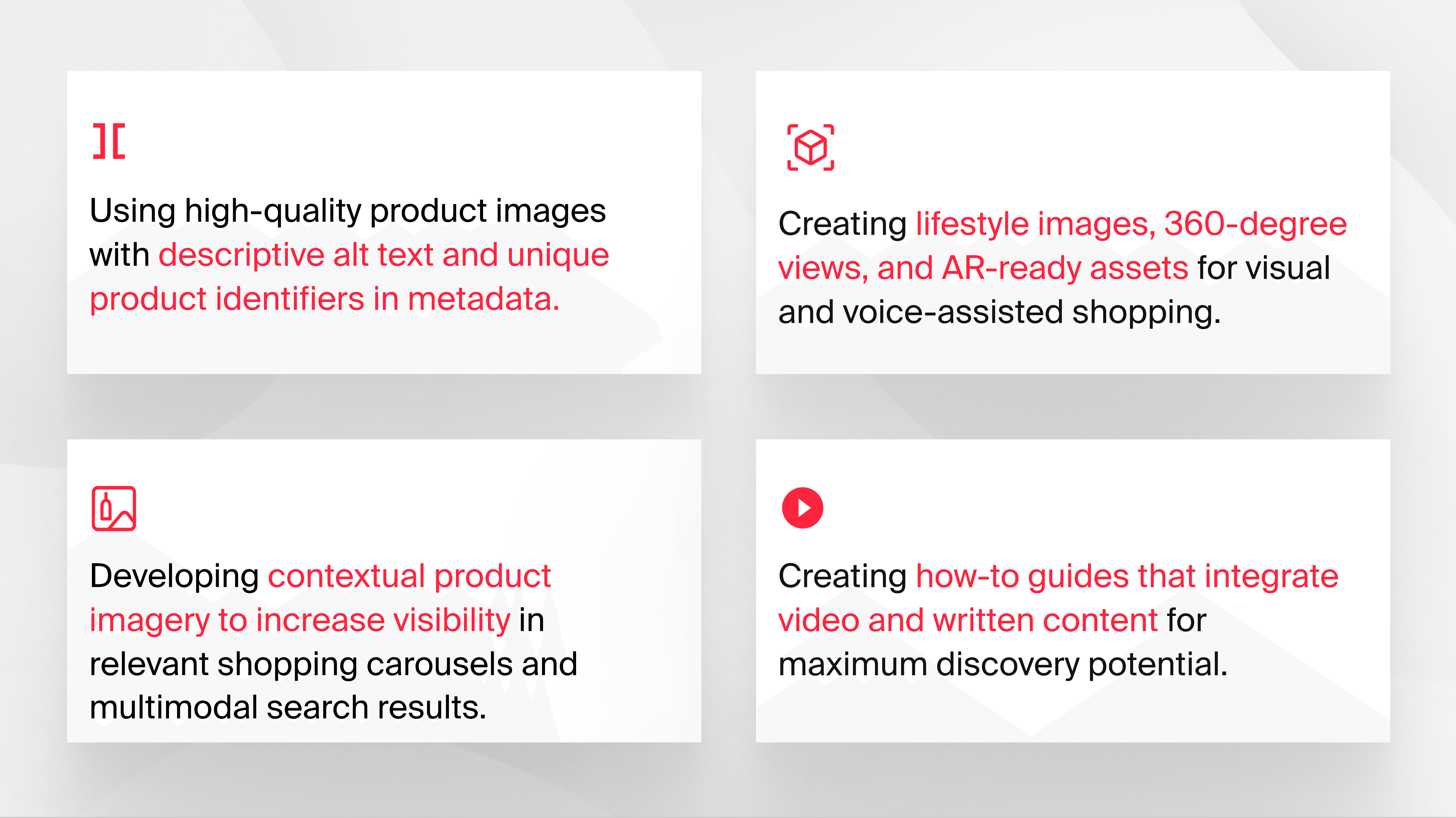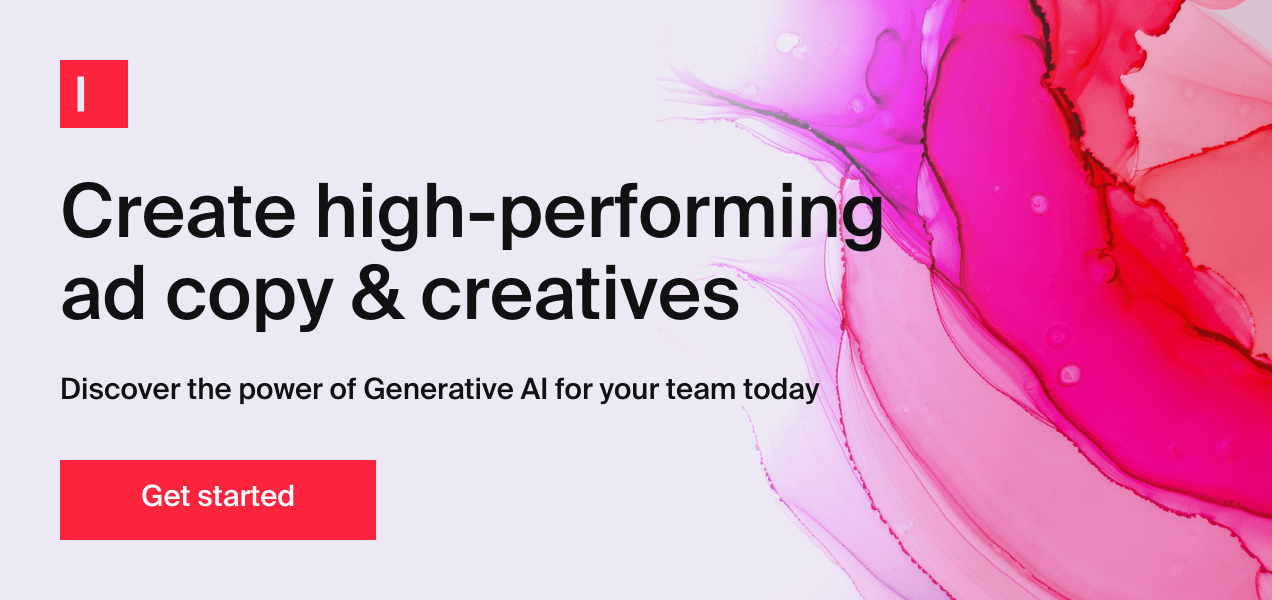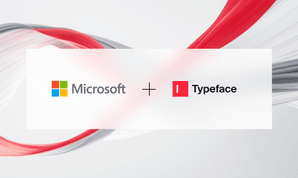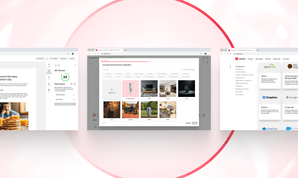AI at Work
The B2C Playbook for 2025: Brand-Centric, Scalable Content, and Smart Personalization

Ashwini Pai · Senior Copywriter
April 10th, 2025 · 14 min read

Budgets are set, campaigns are rolling, and it's go time for B2C marketers. As customer expectations continue to rise and generative AI reshapes the competitive landscape, marketing leaders are aligning key priorities that will define success in 2025. Let's explore the initiatives that forward-thinking brands are investing in to stay ahead.
Key Takeaways
‘Brand’ first, performance next: With 31% of CMOs acknowledging past overemphasis on performance tactics, forward-thinking brands are rebalancing marketing investments to build long-term equity—resulting in 31% better ROAS compared to performance-only approaches.
Content on repeat, for every audience: Successful marketers are transforming one-off content efforts into systematic frameworks that enable personalization across all customer touchpoints.
MarTech meets loyalty → smarter investments ahead: Generic loyalty programs no longer suffice—winning brands deliver dynamic, personalized rewards based on individual customer behavior.
Mastering zero click and multimodal strategies: As consumers embrace visual, voice, and video search methods, forward-thinking brands are creating diverse content formats that optimize discovery beyond traditional text-based search.
Catching growth waves with generative AI: Leading organizations leverage AI to enhance human capabilities, freeing teams to focus on creative and strategic work while automating production.
Did you know?
Did you know?
60% of CMOs see AI as a creative enhancer, while 54% plan to use it for cost-cutting automation
1. The shifting balance: Brand building vs. performance marketing in 2025
Performance marketing has long been a cornerstone of eCommerce marketers and generally, B2C retailers seeking an immediate impact on sales or lead generation. With customer loyalty waning, impulse purchases declining, and brand differentiation becoming even more important, marketers are emphasizing long-term brand marketing over performance marketing to cultivate consumer trust, confidence, and loyalty in a hypercompetitive market subject to economic headwinds.
What the research shows
Per the latest DMEXCO survey of CMO priorities for 2025:
27% of CMOs plan to maintain their performance marketing investments
31% acknowledge having overemphasized performance at the expense of brand development
32% are now strategically increasing their brand building budgets
The survey also highlights two additional critical trends reshaping the marketing ecosystem:
Social media continues its ascent as a dual-purpose channel for both performance marketing and brand building with 95% of companies already leveraging these platforms and 74% planning to expand their social media investments further.
AI adoption is accelerating rapidly within marketing departments — 60% of CMOs now view AI as a creative enhancement tool while 54% aim to implement AI-driven automation to reduce operational costs.
A recent analysis of over 40 digital commerce brands representing more than £100 million in media investment reveals a striking performance gap: brands implementing a balanced approach of awareness and traffic campaigns alongside performance-focused initiatives experienced a dramatic 31% year-over-year improvement in Return on Ad Spend (ROAS) during Q1 2024. This stands in sharp contrast to brands pursuing performance-only strategies, which suffered a 32% year-over-year ROAS decline during the same period.

This data validates the emerging consensus that sustainable digital growth requires marketers to nurture both ends of the customer journey rather than focusing exclusively on bottom-funnel conversion tactics.
What this means for you
The key challenge isn't choosing between performance and brand marketing, but orchestrating them to work in concert. To succeed in this new paradigm:
Establish brand foundations first: Use Typeface's Brand Hub to organize your brand intelligence into a searchable repository and transform static guidelines into an actionable system that evolves with your brand.
Validate content against brand standards: Leverage Brand Agent to automatically verify content against your guidelines, suggest improvements, and maintain consistency across regions.
Blend creativity with automation: Implement Typeface Arc Agents to seamlessly combine human creativity with AI automation throughout your content lifecycle, enabling better orchestration of multichannel campaigns with less effort.
Apply data insights to brand decisions: Use Typeface's ability to integrate with your brand data and campaign performance metrics to identify which brand-building activities drive long-term performance gains.

2. Content creation as a repeatable, scalable process
B2C marketers agree that the importance of content marketing has only become more important for their organizations. Key factors driving this content explosion include:
The need to create content for numerous platforms simultaneously (social media, website, email, SMS, retail displays, packaging, apps, etc.), each with unique format requirements and audience expectations.
Satisfying content-hungry algorithms as platforms like TikTok, Instagram, and YouTube reward frequent posting, creating pressure for constant content creation to maintain visibility and engagement.
Personalization demands as consumers expect tailored experiences, requiring marketers to create multiple versions of content for different audience segments, personas, and stages of the customer journey.
Shortened content lifecycles as content becomes outdated faster in today's fast-moving consumer environment, necessitating continuous refreshes and updates.
Generative AI adoption with tools like ChatGPT and DALL-E dramatically lowering content creation barriers, enabling marketers to produce more content with the same resources.
Testing requirements as data-driven marketing approaches require multiple content variations for A/B testing to optimize performance.
Even as B2C marketers create more content than ever, most retailers still treat content as disconnected projects requiring unique assets rather than developing systematic approaches. This perspective prevents them from establishing repeatable processes and scalable frameworks that would transform exhausting one-off efforts into strategic systems delivering consistent results and meaningful business impact.
It also limits marketers’ ability to:
Personalize at scale as creating tailored experiences requires a steady stream of content variations (e.g., localized messaging, product recommendations, audience-specific creatives).
Create consistent brand experiences with disconnected connected content efforts often leading to messaging, visual, and brand voice inconsistency across platforms and brand fragmentation, making it harder to build trust and long-term relationships.
Leverage opportunities due to a lack of scalable frameworks, which makes it nearly impossible to personalize at the granular level modern consumers expect, leaving potential revenue and loyalty gains unrealized.
Optimize customer data and systematically apply insights across all content.
Push hard on creativity as relentless production cycle exhausts creative teams, leading to diminishing returns on originality and effectiveness.
Forrester’s 2025 B2C marketing predictions guide foresees a reunification of creative innovation and scaled execution. Marketers’ evolving needs to scale content and creativity can be glimpsed in the new creative partnerships occurring in the advertising industry and efforts by leading firms to merge their creative and production units.
What this means for you
To meet escalating content demands without sacrificing quality or consistency:
Implement templated creation systems: Utilize Typeface's AI content creation agents and templates across all formats (blogs, emails, ads, social media) to establish repeatable processes that scale efficiently.
Repurpose content intelligently: Deploy Blend templates to efficiently transform existing brand content into new formats—such as converting a webinar into follow-up emails or podcast episodes into blog posts.
Refresh existing content for maximum value: Use Typeface's explainable AI to identify content that isn't SEO-optimized or brand-aligned, then quickly refresh it to improve search visibility and conversion potential—extending the lifecycle of your existing assets without starting from scratch.
Automate creative variations: Apply Ad Agent to transform single creative concepts into multiple variations tailored for every channel, audience, and market—increasing testing capacity without proportional effort.
Create content systems, not one-offs: Develop systematic approaches to content creation that can scale across all customer touchpoints, transforming exhausting individual projects into efficient, repeatable frameworks that deliver consistent results.
![Blog Image - Brand system creation.PNG]()
3. Investments in unifying loyalty and MarTech are set to increase
Customer loyalty has shifted dramatically since the COVID-19 pandemic. According to Forrester's research, brand loyalty will fall by 25% even as the usage of loyalty programs increases, largely driven by price sensitivities and high prices, which are powerful motivators behind brand switching.
In a related prediction, investment in unifying loyalty and marketing tech data is likely to triple in 2025 as companies eliminate silos to improve efficiency, personalization, and customer experience. Synchronizing data between loyalty and marketing tech involves integrating customer data from both systems to create a unified view of the customer.

Generic programs no longer suffice—customers expect dynamic offers based on their past behavior, preferences, and predictive analytics. Giving members control over their rewards, such as choosing between discounts, early access, or exclusive content, enhances engagement and makes the program feel truly personalized.
What this means for you
To revitalize your loyalty engagement in this new environment:
Focus on value over volume: While your competitors chase transaction metrics, concentrate on building deeper relationships by delivering personalized experiences that demonstrate genuine understanding of customer preferences.
Integrate data sources: Connect your customer data platform with Typeface to generate tailored, multimodal content for each persona and segment without data leakage or privacy concerns.
Personalize at scale: Leverage Typeface's integration capabilities with platforms like Salesforce, Google, and Microsoft to scale personalization efforts using your own style guides, messaging frameworks, and brand assets.
Train AI on your brand: Create your own Brand Hub on Typeface with your brand assets, data, and content to ensure everything you create remains effortlessly on-brand while still feeling personalized to each recipient.
Maintain voice consistency: Establish clear guidelines for terminology, tone, and messaging to ensure a unified, consistent brand voice across all loyalty communications.
Did you know?
Did you know?
Brand loyalty is set to drop 25% even as loyalty programs grow
4. Adapting to zero-click and multimodal searches
Multimodal searches using Google Lens, voice, and video queries are fundamentally changing how customers discover products. Google Lens processes nearly 20 billion visual searches each month with 20% of those being shopping-related. Voice search on mobile has risen significantly, and video searches are becoming the preferred discovery method for a growing segment of online users.

With this reshaping of customer interaction patterns, marketers must go beyond traditional search engine optimization techniques and develop comprehensive multimodal search strategies, including:
Using high-quality product images with descriptive alt text and unique product identifiers in metadata.
Creating lifestyle images, 360-degree views, and AR-ready assets for visual and voice-assisted shopping.
Developing contextual product imagery to increase visibility in relevant shopping carousels and multimodal search results.
Creating how-to guides that integrate video and written content for maximum discovery potential.
While white backgrounds remain recommended for Google Shopping Ads and marketplace listings, lifestyle images work exceptionally well in carousel-style formats like Performance Max campaigns, helping shoppers visualize products in real-world settings.
What this means for you
To optimize for discovery in a multimodal search environment:
Diversify your product imagery: Use Typeface to rapidly generate and test multiple versions of product visuals, from standard white-background shots to lifestyle imagery that performs better in social feeds and carousels.
Eliminate visual production bottlenecks: Leverage AI photography capabilities to create high-quality product and lifestyle shots without the cost or time investment of traditional studio photography.
Adapt to emerging trends: Quickly generate, update, and localize product images to match seasonal themes, trending color schemes, or viral aesthetics as they emerge.
Test visual performance: Create and test multiple variations of product imagery to identify which visual approaches resonate best in different multimodal search environments.
Generate complementary content: Create ads that reflect customer feedback and market research, tailor content for diverse demographics and shopping behaviors, and develop targeted ads that maintain brand consistency across channels.

5. AI driving a new era in retail
Generative AI is enabling brands to create uniquely personalized customer experiences that drive competitive advantage and build lasting loyalty. Through intelligent customization at each touchpoint, companies can forge deeper connections that transform occasional buyers into devoted advocates.
Marketing teams have shifted from planning to actively implementing AI, fostering cultures of experimentation and learning. The most successful implementations recognize AI's role in enhancing human capabilities—freeing people to focus on creative, empathetic, and strategic work while automating routine production.
At the same time, deploying generative AI in marketing requires responsibility. Organizations must implement strong controls, guidelines, and monitoring to mitigate risks while elevating brand storytelling and creativity.
What this means for you
To successfully integrate AI into your marketing approach:
Balance automation with creativity: Use AI to handle repetitive production tasks while redirecting human creativity toward strategy, storytelling, and emotional connection—areas where human touch remains essential.
Establish responsible AI practices: Implement Typeface's strong controls, guidelines, and monitoring capabilities to ensure your AI-generated content adheres to ethical standards and brand values.
Focus on integration: Rather than treating AI as a separate tool, integrate it throughout your marketing stack to ensure consistency and enhance existing processes rather than creating parallel workflows.
Prioritize personalization: Use AI to analyze customer data and generate highly personalized content that speaks directly to individual preferences and behaviors, creating more meaningful engagements.
Create safe spaces for experimentation: Establish controlled testing environments where teams can experiment with AI capabilities without risking brand reputation or customer experience, gradually expanding successful applications.
Did you know?
Did you know?
65% of shoppers stay loyal to brands that deliver personalized experiences
Building on 2025's lessons for the New Year
The B2C marketing landscape continues to evolve rapidly, with brands that embrace these key trends positioned to gain significant competitive advantages. As you plan for 2025 and beyond, remember that success will depend on your ability to:
Balance brand building with performance tactics while implementing end-to-end content workflows.
Integrate AI and data insights to deliver consistent messaging across channels.
Unify loyalty programs with marketing data to deliver personalized experiences.
Prepare for emerging search behaviors including visual and voice queries.
Implement holistic content lifecycle workflows to scale personalization while maintaining brand consistency.
Success ultimately hinges on leveraging both automation and human creativity. Typeface empowers you to confidently adapt to these marketing shifts—deepening customer relationships, driving revenue growth, and setting new benchmarks for marketing excellence in 2025 and beyond. To learn more about how our platform can transform your marketing strategy, contact sales or go ahead with a demo.

Share
Related articles

Partnerships
Accelerating Enterprise GenAI Across the Microsoft Ecosystem

Typeface
July 18th, 2023 · 3 min read

AI at Work
Top Content Marketing Trends to Watch Out for in 2025

Akshita Sharma · Content Marketing Associate
November 27th, 2024 · 10 min read

Product
Accelerating AI Content Lifecycle Transformation: Unveiling Typeface Arc Agent, Strategic Acquisitions, and Multimodal Product Innovation

Typeface
September 16th, 2024 · 6 min read
